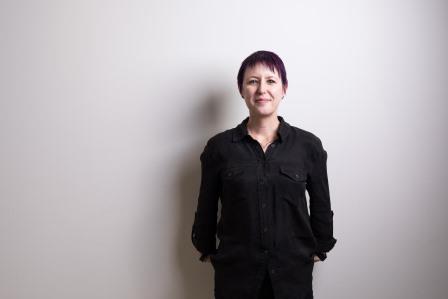SUSIE COUPER

Susie Couper is an Australian community member with VWD and a Haemophilia Foundation WA committee member.
Susie has been one of the patient representatives on the committee to develop the international VWD clinical guidelines and is now a member of the World Federation of Hemophilia committee for women with inherited bleeding disorders
At the WFH Global Summit on women and girls with inherited bleeding disorders I had the honour of speaking about how patients can use the (now published) 2021 international Guidelines for the diagnosis and management of von Willebrand disease.
In the early years, when we were diagnosed with VWD (von Willebrand disease), to me it seemed to be all about the boys and all about haemophilia. Over the last five to ten years I have seen a continued and dedicated shift in people working to draw out the experience and stories of women and people with VWD. I want to contribute to the work being put in internationally to raise awareness and improve health care outcomes for women with inherited bleeding disorders. This is a deeply personal commitment – I was 27 with two sons before I was diagnosed and had improperly treated bleeding; I want to help make things better for others.
The guidelines are a result of a collaborative effort between the American Society of Hematology (ASH), the International Society on Thrombosis and Hemostasis (ISTH), National Hemophilia Foundation (NHF), and the World Federation of Hemophilia (WFH). Patient representatives were actively involved at every stage. This is something everyone can be really proud of: we were brought in early and valued at every stage, with our opinions specifically and frequently sought.
I view the patient involvement as an expression of deep commitment to patient centred care and improved health outcomes by the collaborating organisations as well as the whole team.
SOME CONSIDERATIONS
That said, there’s a few caveats with the Guidelines to be mindful of from a patient perspective. The Guidelines were developed systematically and primarily intended to help clinicians make decisions.
They are not a patient tool like the Let’s Talk Period Self-BAT (self-administered bleeding assessment tool). If you haven’t seen it, I think it is well-worth a look. I personally see it as a gold standard in terms of providing tools for personal use to make decisions. The Self-BAT is a scientifically validated scoring tool developed by Dr Paula James, a Canadian haematologist – some of you will have met her at the 2017 Conference in Melbourne. The test aims to help you better understand whether current, or previous, bleeding episodes are normal or abnormal. You can access it at the Let’s Talk Period website – letstalkperiod.ca.
The VWD clinical guidelines don’t address all treatment situations. There was a limit on the number of questions / variations that could be covered and we were confined to very rigorous methodology in question selection. The guidelines make recommendations on interventions (treatments). These may be strong or weak but that does not mean the treatment is suitable or unsuitable. It simply relates to the ability to make a recommendation based on research evidence availability. It is important to keep in mind that the guidelines are a technical document. There will be more work done on educational resources, both for health care professionals as well as patients.
The guidelines are published in the medical journal Blood Advances1,2. You might want to view them there but in terms of keeping up with everything, I’d recommend following the World Federation of Hemophilia Facebook group at https://www.facebook.com/wfhemophilia.
WHERE NEXT?
So as patients, how can you use them?
These guidelines aren’t really ready for patient use and they aren’t specific to the Australian setting. I’m sharing this with you now, however, as I want you to know that changes are on their way. I have every faith that the result will be constructive and useful. With planning and proper implementation, we’ll have guidelines that bring more certainty to getting diagnosed and managing our care.
I have always wanted to approach the treatment for my and my son’s VWD from a shared decision-making perspective. I was so pleased to learn that health care professionals want that too. We even had a specific session for the patient representative on the shared decision making. I’d say it is a beneficial thing to focus on what your desired outcomes are. Speak about what you want, what your priorities are. But also, to say what you don’t want. During the process I learned that often our health care providers don’t grasp our day-to-day experience and can make assumptions about our priorities that may not apply. There are going to be knowledge gaps – with wide variability and new information, now is a good time to question your own as well as your treating team’s assumptions and look at new or different options. Be curious and informed, keep humility with pride. I have been happily surprised to be wrong about treatments we can use and learn how to treat better.
And a final tip – spread the word, tell your community. Sometimes we need to hear a message more than once to grasp it.
Haemophilia Foundation Australia acknowledges the Traditional Owners and Custodians of Country throughout Australia, the land, waters and community where we walk, live, meet and work. We pay our respects to Elders past and present and extend that respect to all Aboriginal and Torres Strait Islander peoples.
Sign up for the latest news, events and our free National Haemophilia magazine